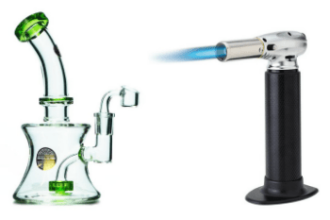Everywhere you go, you see concrete. Every step you take outside shouts a massive grey concrete floor! Walk a little from where you are. You see walls and exterior of establishments; they are all standing hardcore cemented structures.
Today’s post will show you the types of structural damages often occur among concrete walls and floors. Learn how to tell each and know what to do to save the structure from going down and crumbling. Being able to say the type of damage will help you communicate to concrete repairing services and ease up any repair project in the future.
How to tell the different forms of defects in the concrete
The concrete structure has fascinating durability that no matter what weather has passed you buildings, commercial spaces, and homes remain standing.
However, due to natural causes, and with time going by, any material will show some defects or flaws.
Common defects that you may see would appear as scaling, crazing, chipping, efflorescence, and slabs popping out, causing uneven surfaces.
1- Cracks
The most common type is cracks on the concrete. Surface cracks are common, and you may not need to worry much about them. This kind would only be minor and simple patching would fix it.
There will also be cracks from the base foundations or the top surface to the slab’s core. These are often the result of falling heavy objects like massive machinery or metallic tools that are weightier than their size.
2- Scaling
Scaling would often begin on the surface. It happened when the concrete mixture did not achieve the right consistency thus will not cure at the right time.
It is also the result of too much moisture present on the cement material. It occurs when applying a sealer while the mix is still moist.
Often this will appear on a newly installed slab. It will be best to contact a top contractor to fix the issue free of obligation.
3- Construction and Installation Defects
With the same idea from number two, defects on the slabs may appear when an installer misses a step or hasten a process like curing. Aside from the cement not drying, there are other common construction errors on concrete. Find them out below:
- Honeycomb creases on the surface – Honecombing is a common condition that tells something was wrong with the installation process. It looks like scaling. You will see hexagonal shapes side by side with each other starting to appear on the surface.
- Bugholes are appearing on the surface – this tells you that there’s too much sand added to the mix.
4- Efflorescence
Efflorescence appears as powdery and glittery-crystalline residues along hair-thin creases on a concrete slab. You should worry about leakage happening adjacent to where the concrete stands when this happens.
Or it could be water building up to the ground—the moist crawl up on the surface, causing efflorescence.
5- Spalling
A very concerning damage on the concrete is when the slabs begin to pop out. Not only that it caus unpleasant sight, but it also causes accidents.
When an impact of heavy objects causes the spalling, blocks, or fragments of concrete to leave the surface, and that causes holes and chipping, which would also lead to major cracks in the concrete.
Conclusion
The importance of knowing these types of concrete flaws will help you be quick to decide the right time to repair them. Most of all, you will know when to call a professional and when to DIY a solution.














